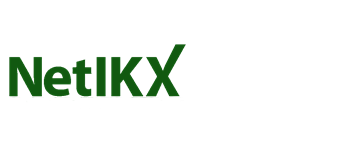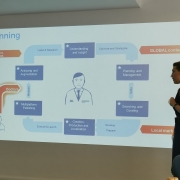Blog for July 2019: Content strategy
The speakers for the NetIKX meeting i July 2019 were Rahel Baillie and Kate Kenyon. Kate promised they would explain what Content Strategy is and what it isn’t and how it relates to the work of Knowledge Management Professionals. The two speakers came at this work from different backgrounds. Rahel deals with technical systems while Kate trained as a journalist and worked at the BBC.
Managing content is different from managing data. Content has grammar and it means something to people. Data such as a number in a field is less complex to manage. This is important to keep in mind because businesses consistently make the mistake of trying to manage content as if it were data. Content strategy is a plan for the design of content systems. A content system can be an organic, human thing. It isn’t a piece of software, although it is frequently facilitated by software. To put together a content strategy, you have to understand all the potential content you have at hand. You want to create a system that gives repeatable and reliable results. The system deals with who creates content, who checks it, who signs it off and where it is going to be delivered. The system must govern the management of content throughout its entire lifecycle. The headings Analyse, Collect, Manage and Deliver can be useful for this.
Kate pointed out that if you are the first person in your organisation to be asked to look at content strategy, you might find yourself working in all these areas, but in the long run, they should be delegated to the appropriate specialists who can follow the Content Strategy plan. In brief, the first part of content strategy is to assess business need, express it in term of business outcomes and write a business case. It is part of the job to get a decent budget for the work! When you have a clear idea of what the business wants to achieve, the next question is – where are we now? What should we look at? You will need to audit current content and who is producing it and why. Assess the roles of everyone in the content lifecycle – not just writers and editors but also who commissions, creates and manages it as well as who uploads it, and archives it. Then look at the processes that enable this. Benchmark against standards to see if the current system is ‘good enough’ for purpose. Define the scope of your audit appropriately. The audit is not a deliverable, though vital business information may emerge. It is to help you see priorities by perhaps doing Gap Analysis. Then create a requirements matrix which helps clarify what is top priority and what not.
From this produce a roadmap for change and each step of the way keep the business on side. A document signed off by a Steering Committee is valuable to ensure the priorities are acknowledged by all!
The discussion that followed considered the work in relation to staff concerns. For example people might be scared at the thought of change, or worried about their jobs. It was great to have such experienced speakers to meet concerns that were raised. The meeting ended with Kate demonstrating some of the positive outcomes that could be achieved for organisations. There is huge potential for saving money and improving public facing content.
This is taken from a report by Conrad Taylor. See the full report on Conrad Taylor’s website: Content Strategy

